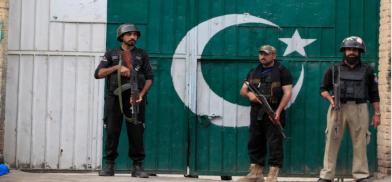Pakistan needs to address foundational causes of its persistent violence and social instability
It is a fact that Pakistan's obsession with military power without attending to the roots of political exclusion and economic disparity has left its vulnerable masses base to the extremes.

Gangs of outlaws operating in the lawless expanse sandwiched between the Sulaiman Mountains, the Indus River, and the Cholistan Desert attacked and killed 12 police officers earlier this month. The bandits, who have been on an upward streak for over a year, have been burning the crops of rich landowners, kidnapping the rich, and pillaging whole villages. The Pakistani government has used military force and police action to take down these outlaws since 2016, but so far it has had little success.
How resilient and growingly powerful those Indus bandits are sent a strong signal of a big problem regarding the shape of Pakistan, which is presently at risk of being torn apart into anarchy. While similar gangs once controlled large areas of India too, Pakistan's failure to purge violence from its very heartland, where Punjab, Balochistan, and Sindh meet, displays the fragility of the nation-state.
The failure is an ominous portent of the far more serious challenges that lie ahead. The bandit empires began their rise in Pakistan between 1984 and 1994, which were the years of consolidation of military power under General Zia ul Haq. Large numbers of the clans such as Chandio, Kosa, and Jatoi got drawn to these groups; all whose elements had been bandits since the times of Mughal and even earlier. Even under the most enlightened Mughal rule, this empire could seldom suppress threats of robbery to trade caravans. Large merchants often employed whole armies of retainers as protection. When the problem got particularly bad, the Mughals would use great and heavy-handed force to suppress the bandits. Once, one colonial traveler, Peter Mundy, noted over two hundred minarets outside a town "decorated" with the heads of thieves. However, such summary punishment did little to bring long-term success, since the absence of a strong state apparatus which could efficiently establish control over the vigilantes and, at the same time, resolve the grievances of the common people, meant that those attempts were doomed to fail for all practical purposes.
Easy availability of weapons
The easy availability of modern weapons left over from the Afghan jihad increased the lethality of these bandits manifold. Like the Mughals, General Zia's regime tried to crush them. In 1983, bandit leader Muhammad Paryal Chandio was taken to Sha Panjo railway station, a nondescript halt on the line from Karachi to Quetta, and dispatched with a single bullet to the back of the head. But days after his death, the mourners, bearing hand-woven shawls, started trickling to Paryal's grave.
Bandits mixed up with jihadists
Pederasty was part of the sexual culture of the bandits, but more conventional relationships went on furtively. Wives often visited their husbands hiding in the forests, and many bandits kept local mistresses. Beyond their violent lifestyle, the bandits presented themselves as defenders of the local cultural traditions, melting aspects of their social identity with their criminal activities. While the bandits do not have an articulated ideological program, their presence cannot be ignored together with other movements which also competed for the same territory. Southern Punjab has witnessed a gathering of jihadist outfits like Lashkar-e-Taiba and Jaish-e-Mohammad, apart from far-right anti-Shia groups such as the Sipah-e-Sahaba Pakistan. And yet, in their silence, the bandits represent another breed of resistance, one not just to the state, but also to religious fundamentalism.
Since 2016, there has been a suspicion that bandits forge alliances with groups like the Tehreek-e-Taliban Pakistan, offering them safe havens in return for modern weapons and tactical training. Concrete evidence to support this assertion is still scant, but these fears are mainly driven by concerns over Chinese-funded infrastructure projects in Pakistan's heartland. All such efforts, despite large-scale use of force, have little to curb banditry. On the other hand, India managed to stabilize formerly violent regions like Bundelkhand and the Chambal Valley owing to the political rise of hitherto subaltern communities and a system that could accommodate their claims to power.
Deep seated grievances
The continuing violence in Pakistan underlines an important lesson: "Force can win wars but cannot guarantee peace." The persistent violence in Pakistan reminds us that simple use of force will not settle security challenges. While military operations may yield short-term successes, they cannot eradicate the social, political, and economic grievances deep-seated in insurgencies and banditry. Good counterinsurgency requires that economic development be intertwined with political inclusivity and grassroots engagement.
It is a fact that Pakistan's obsession with military power without attending to the roots of political exclusion and economic disparity has left its vulnerable masses base to the extremes. The persistent social instability implies an urgent change in terms of policy, not merely security measures but also one which makes provisions for empowering and livelihood improvement of the local populations. Sustainable peace will never be achieved so long as these foundational causes of violence are in existence. Sustainable peace must therefore eradicate them first and guarantee justice, equity, and inclusion for all constituents of society, including rebels.
(The author is a second-year masters student at the Nelson Mandela Center for Conflict Resolution, Jamia Millia Islamia, New Delhi. Views are personal. He can be contacted at tahaali502@gmail.com )









Post a Comment